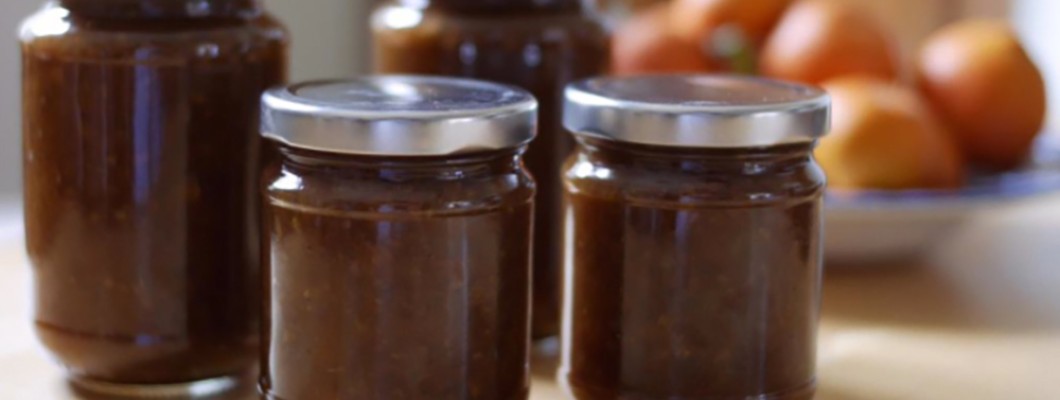
The following recipe has been kindly contributedby Vivien Lloyd, who is a renowned preserver, baker, author, and tutor.She has appeared on various TV and radio shows and is regularly featured in the press. She is the author of a number of books, including the excellent “First Preserves: Marmalades, Jams, and Chutneys,"; which is an authoritative guide featuring reliable recipes and explanations that are not found elsewhere. Ideal for both novices and experienced preservers, itand available now from The Bottle Co., her website and Amazon. To find out more about Vivien Lloyd, check out her website.
In this guide, Vivien talks us through her recipe for Apricot and Orange Chutney
Traditionally, chutneys are made from gluts of fruit and vegetables in the summer and autumn. This Apricot and Orange Chutney recipe, using dried apricots and sweet oranges, is an exception, one I make at the end of the marmalade season in early March. In the early summer, in two to three months, the chutney will be mature and ready for eating.
It makes around 2.75kg
500g sweet oranges
450g dried apricots
450g onions¨
225g sultanas
100g candied or stem ginger in syrup, drained
6 cloves garlic
30g allspice berries, bruised
30g coriander seeds, crushed
15g mustard seed
15ml salt
1.15 litres of cider vinegar
450g demerara sugar
1) Soak the apricots in a covering of cold water overnight.
2) The next day, drain the apricots, reserving 300 ml of the soaking liquid. Finely chop the onions and garlic. Place these in a large preserving pan with a lid. Pour over the reserved 300 ml of soaking liquid. Bring the pan to a boil, turn the heat down, and simmer the onions and garlic until very soft.
3) Remove the lid from the pan and set it aside. Finely chop the apricots, ginger, and sultanas. Remove the zest and then the pulp from the oranges. Chop the pulp. Add the orange zest, pulp, ginger, and sultanas to the pan. If you have a food processor, use it to finely chop the apricots, orange pulp, ginger, and sultanas.
4) Tie the spices up in a piece of muslin and add it to the pan with the vinegar and salt. Bring the pan slowly to a boil, then turn the heat down to a very gentle simmer. Cook for about an hour, until the contents of the pan are pulpy, stirring occasionally.
5) Add the sugar and dissolve it carefully. Continue to cook gently until the contents of the pan are thick and no “free” liquid remains. Stir frequently to prevent the chutney from sticking to the bottom of the pan. Place the jars in a pre-heated oven at 140C/275F/Gas1 for 15 minutes.
6) Remove the pan from the heat and the jars from the oven. Squeeze out the liquid from the muslin bag and put it back into the pan. Stir the chutney and ladle it into a glass or plastic jug. Pour the chutney into the jars, filling them to within 5mm from the top. Seal the jars with new, vinegar-resistant twist-top lids. Leave the jars upright and undisturbed until cold. Store for 2–3 months before opening.
-1000x562.jpg)
